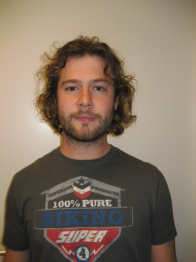Cold gas micro propulsion
Promotion date: 30. October 2009
Promotor: Prof. Dr. Miko Elwenspoek
Assistant Promotor: Dr. Ir. Henri Jansen
| A propulsion system has been developed, which is supposed to control the distance between two small satellites. The trend of miniaturization of satellites requires small sized propulsion systems, with system components in the micrometer range. The system is a miniaturized version, of a cold gas blow-down rocket engine consisting of: an active valve, a particle filter, a nozzle and an electronic module. These components together ensure an accurate thrust for position corrections of the satellite. |
What is such a small propulsion system supposed to do?
The little satellites are approximately 10x10x10 centimetres in size. A little gas tank contains 0,8 grams of nitrogen, enough for six thousand little corrections a year. Because of little differences in size and shape, the cooperating satellites drift apart a little. They should be in very exact positions, an inaccuracy of one metre is allowed over a distance of about one hundred kilometres.
A valve and a nozzle are researched in more detail.
We succeeded in fabricating a nozzle very nicely, by means of microsystem techniques. Three techniques have been examined. The best result is obtained with powder blasting of glass and a consecutive heat treatment, to obtain a smooth surface and the right shape. We managed a nice conical, converging-diverging nozzle shape.
The valve was more difficult to make, because we needed a novel design: requiring low force, while still promising to be leak-tight. The next half year we will be working on this further, using a new idea.
What does this idea contain?
We intend to use a flexible membrane to pull over a valve seat pattern to make a leak-tight seal. It can deform and adjust to the surface topography. However, the fabrication technique used involves high temperatures, resulting in buckling of the membrane, which prevents a leak-tight fitting at this stage.
What Mesa+ expertise was used in this thesis project?
Within the Transducer Science & Technology group, a lot of expertise is available on microsystem fabrication techniques, in all kinds of combinations. While Mesa+ focused more and more on nano aspects in recent years, we more emphasize the micro-range aspects, using the cleanroom techniques of Mesa+ very intensively.
What are your future plans?
First of all, I will continue the project as a post-doc for at least half a year. After this period I would like to travel for a while. Furthermore, I do have a lot of personal interests. For example, I am training to become a certified yoga teacher.
As a researcher, I would like to be part of a team, more so than in the thesis project. A lot of energy is wasted in motivating yourself, every time again. Being a creative researcher, working in a well structured team, is one of my challenges for the future.

